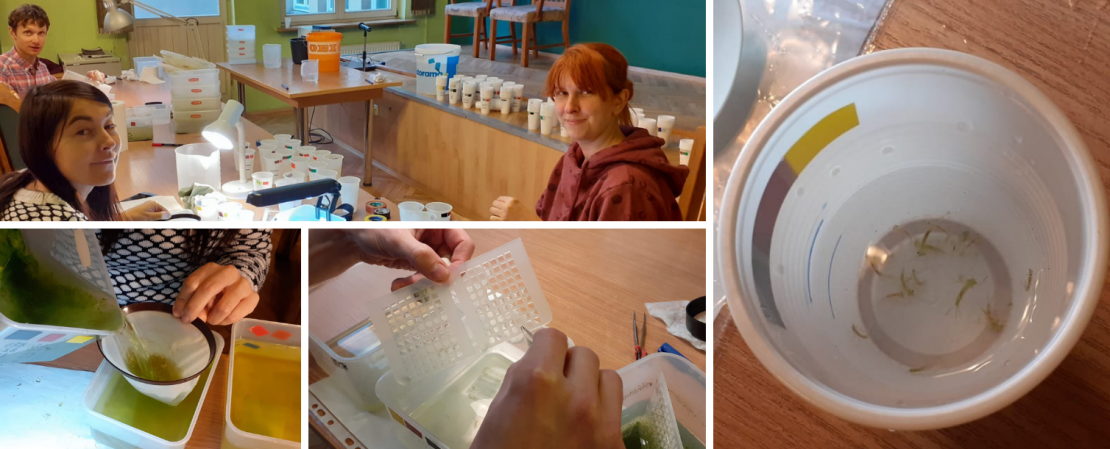It's getting darker and darker in Krakow and we expect snowfall any minute now. Whereas for the larvae of Ischnura elegans in our laboratory at the Institute of Nature Conservation PAS winter has just finished!
The blue-tailed damselfly samples have been collected in urban and rural ponds in two latitudes: southern Poland and southern Sweden. Szymon Sniegula together with Gemma Palomar carry out an experiment to measure the traits responsible for the reproductive success of Ischnura elegans: body weight and growth rate.
For the experiment, we used about 240 Ischnura elegans larvae from each of the eight sampled ponds. Therefore, the overwintering was carried out on approximately 2000 larvae which were divided into 48 groups, taking into account the following factors:
latitude (2) x urbanization (2x2) x temperature (3: 20°C, 24°C i 28°C) x predator (2, including control groups) = 48 groups x 4 larvae x 10 families ≃ 2000 larvae
Considerably fewer larvae from southern Poland than those sampled in southern Sweden made it through the wintering. Consequently, it was decided that individual groups of larvae from Poland would be exposed to one of only two temperatures: 20°C or 24°C.
As a result, in the experiment there will be 40 groups of Ischnura elegans larvae to observe:
Factors of impact on larvae from southern Poland:
latitude (2) x urbanization (2x2) x temperature (2: 20°C, 24°C) x predator (2, including control groups) = 16 groups
Factors of impact on larvae from southern Sweden:
latitude (2) x urbanization (2x2) x temperature (3: 20°C, 24°C i 28°C) x predator (2, including control groups) = 24 groups
Total: 40 groups.
In the current stage of the experiment, the groups of larvae will be exposed to two factors: different water temperatures and (as soon as the larvae reach the F0 stage – last stage before emergence) predator’s scent in the water (the invasive species: spiny-cheek crayfish Orconectes limosus) or its absence (control groups).
The experiment is conducted within WP5 of the ECOPOND project.



